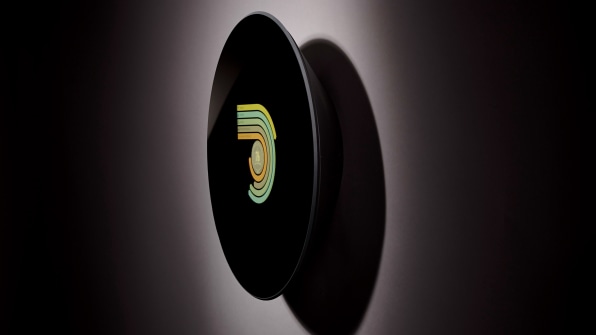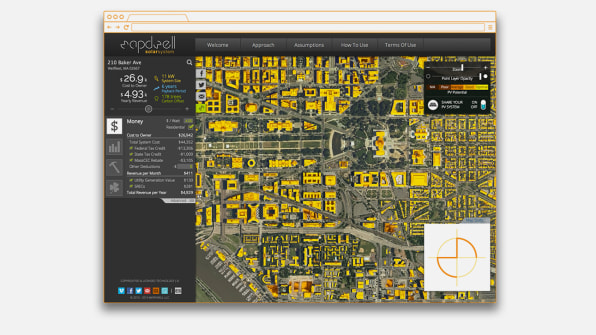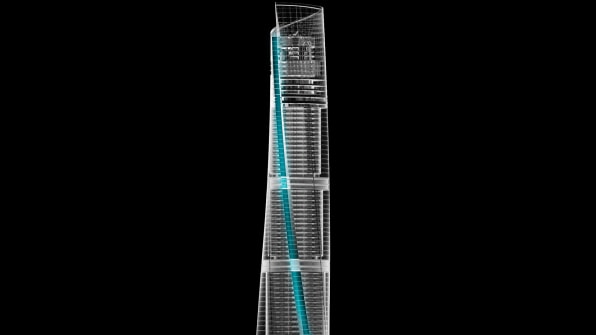Best Place for Graphic Designers to Live
Lounging poolside in 93-degree July heat as Daft Punk's "Get Lucky" thrums through the patio speakers, Tony Fadell takes a sip of nonalcoholic beer and sinks far enough back into his chair that his belly peeks out from under his Lacoste polo. We're in the backyard of his Woodside, California, home, not far from the tennis court, barn, and private forested driveway with a horse-crossing sign. The house itself is rather modest, a modern slice of heaven that Fadell spent five years searching for and then two years remodel-ing, filling its tall, white rooms with state-of-the-art technology and Art Basel–style furniture. He calls its design "classic California." A 1969 Ford Bronco, which Fadell recently restored with original parts, sits out front. He and his family moved here two and a half years ago, and the place feels lived in–a few kids' toys are splayed across the kitchen counter– but idyllic.
Read more
Real-Time Data Helps Buildings Stay Green

Real-Time Data Helps Buildings Stay Green
LEED Dynamic Plaque
The U.S. Green Building Council
Sustainable building practices shouldn't stop when construction is over. The LEED Dynamic Plaque's interactive interface tracks not only how much water and energy a building is consuming but also how workers get there, how well they recycle, and (via user self-reporting) how happy they are. An algorithm compiles the results into an overall "performance score" that managers can respond to–offering people with long commutes the opportunity to work from home, for example. The Dynamic Plaque is a reminder from LEED (aka Leadership in Energy and Environmental Design) that buildings have their own ecosystems that need to be maintained.
Homeowners Learn How to Become Solar Power Users

Homeowners Learn How to Become Solar Power Users
Solar System
Mapdwell
It's more alluring than ever to go solar, but most homeowners still believe panels are "complicated, expensive, not-for-me kinds of things," says Mapdwell CEO Eduardo Berlin. Mapdwell's Solar System platform helps visualize the costs and benefits of installing solar at home by layering information about tax credits, carbon emissions savings, and other details onto a topographical map of local roofs. The web-based tool can even determine the most efficient spots for panels, empowering users to design their own solar energy systems.
A new tech college in Lima, Peru, asked the advertising firm FCB Mayo to help it gain attention. Because easily accessible drinking water is scarce in Peru, the agency (with local scientists) developed a billboard for the school that draws moisture from the air, purifies it, then sends the water to a reservoir where locals can fill up tanks to take home. It was a hit for both the school and the community.
Numbers Go Straight To The Heart

Numbers Go Straight To The Heart
Everytown for Gun Safety
Great design can crystallize the emotional strength of a subject– think of Shepard Fairey's "Hope" poster for the 2008 Obama campaign, or Milton Glaser's iconic "I NY" logo. Everytown for Gun Safety, a 2 million–plus-member advocacy group, is now applying that tactic to gun control, putting powerful statistics into a provocative context. "We really apply the head, hand, and heart model"–evidence, action, and empathy–explains Everytown communications director Erika Soto Lamb. "It's an emotional issue."
A City Reaches The Sky

A City Reaches The Sky
Shanghai Tower
Gensler
Shanghai Tower was never going to be an ordinary skyscraper. Commissioned by the Chinese government, it was to be a soaring statement about the city and country's growing economic prominence. It would be the tallest building in the nation and the second tallest on the planet. As the third in a trio of supertall structures in Shanghai's financial district, it needed to complement its predecessors while looming over them. It had to be iconic, a model of sustainability, and a futuristic answer to the country's rapid urbanization–a vertical city.
In order to satisfy these lofty and varied requirements, Gensler's Jun Xia, the project's lead designer, knew "the design had to be simple." He and his team settled on a single unifying idea: an elegant spiral stretching skyward. The estimated $2 billion–plus tower, which opens next year, is a marvel of design and engineering–not to mention vegetation.
Read more
Urbanites Can Reap What They Sow

Urbanites Can Reap What They Sow
CityFarm
MIT Media Lab
In a lab building on MIT's Cambridge, Massachusetts, campus, researcher Caleb Harper is growing hundreds of pounds of produce each month–lettuce, tomatoes, eggplants, and herbs–all in a space that you might describe as a glorified closet. By using custom-designed, open-source software to precisely calibrate light levels, humidity, temperature, and pH, CityFarm is aiming to create an easily replicable, soil-free urban farm. Though it's still in development, the idea one day is to feed our cities by growing food using fewer resources, near the people who actually eat it.
Charging Stations Bring Power To The People

Charging Stations Bring Power To The People
Street Charge
Pensa
Devices are mobile. Power, alas, is not. But Pensa is trying to help. A vertical public charging station, its Street Charge features plugs for a variety of different mobile devices, topped by three electricity-generating solar panels. It's free to use, and a pilot program in New York, sponsored by AT&T and in partnership with solar-device company Goal Zero, received raves. Since then, Street Charge has expanded to college campuses and music festivals nationwide.
A $1.50 Toilet Saves Millions Of Lives

A $1.50 Toilet Saves Millions Of Lives
SaTo
American Standard
A child dies due to poor sanitation every 20 seconds. With the help of the Bill and Melinda Gates Foundation's Reinvent the Toilet Challenge, American Standard developed a solution: a counter-weighted trap-door toilet pan that costs just $1.50 and seals off access to pit latrines, preventing disease-carrying flies from getting in and out. "That was key to the design process–making it a drop-in to a system that was already there," says Jim McHale, vice president of research, development, and engineering for American Standard. More than 500,000 have been distributed so far.
Best Place for Graphic Designers to Live
Source: https://www.fastcompany.com/3034884/design-is-changing-how-we-live
0 Response to "Best Place for Graphic Designers to Live"
Post a Comment